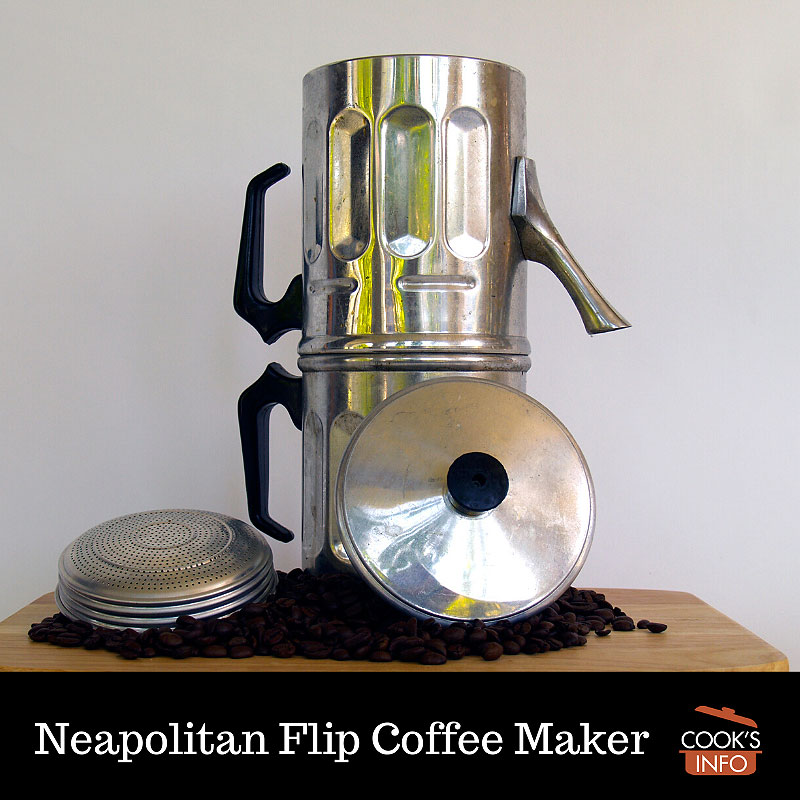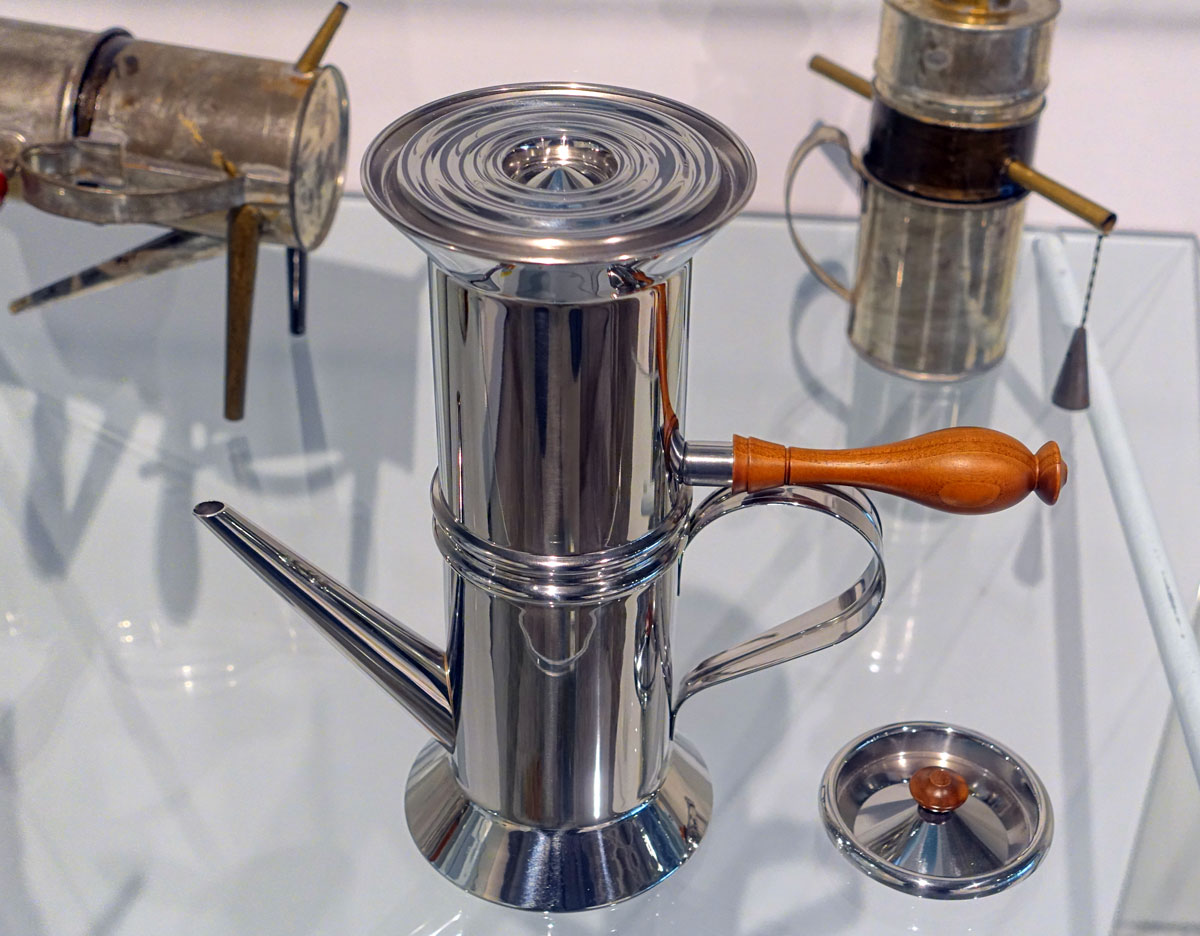
Neapolitan Flip Coffee Maker. © Denzil Green / 2011
A Neapolitan flip coffee maker is a drip-coffee maker to make very strong coffee. It is actually a French design that has been taken to heart by Italians — particularly people in Naples. It’s the coffee pot that you see in classic Italian movies, such as “Roma, città aperta” by Roberto Rossellini.
It consists of two pots that fit together top to top, so that when assembled one is upside down (the one that has the spout.) Each has a handle. In between, there’s a small, flat section with holes to hold the ground coffee. This flat section is actually two parts. It’s a tall cylinder, with a recessed compartment at the top, and a screw-on “lid.” The bottom of that recessed compartment has fine perforations in it. This is what you spoon the ground coffee into. The screw-on lid also has perforations in it.
You fill the bottom section with water, and place the cylinder in. The recessed compartment should end up just above the water. You next fill this compartment with coffee without packing the coffee down, and screw the lid on. Leaving the remaining pot empty, you place it upside down on top. You put the assembled coffee pot on a stove burner, and bring it to almost a boil.
The coffee pot is ready to flip when it begins to fuss. There’s a tiny hole near the top of the bottom pot. When a few drops of water start to seep out of this, the pot is ready to be flipped.
Flipping it puts the boiling water on top. The water now runs down through the compartment in the middle with the ground coffee in it, and flows into the part which had previously been the top. It’s simply gravity driven: the weight of the water pulls it down through the coffee (which is why you mustn’t pack the coffee too tightly.)
This bottom section is the section that has a spout on it, making it look vaguely like a watering can. That’s how you pour the finished coffee out.
Most pots also include a lid — after all the coffee is brewed, you can remove the top pot, and put the lid in its place.
The pots are made in copper, stainless steel or aluminum. The classic and most common is aluminum. They come in different sizes. Cup capacity estimates for these pots are given in 45 ml (1 ½ oz) sizes — espresso size cups.
Coffee in these pots, especially the aluminum ones, gets tepid very quickly, so you may be best to have two or three of the pots of different sizes, choosing the right size for the occasion, and serve it all at once.
These pots are particularly popular in Naples. There, to stop the coffee aroma from dissipating while it is brewing, a small improvised cap is often made from a piece of tin foil or newspaper, and put over the mouth of the spout. In Naples, this is called a “cuppetiello“. Some people in Naples will even hold the pot in hot water (as in a water bath) during the inverted dripping phase to help avoid heat loss, but you have to stand there and hold it, or it may topple over in the water.
In Naples, it is also traditional to have a small glass of water first before drinking coffee, to clean your mouth so that you’ll be able to enjoy the flavour of the coffee better.
Coffee made in these pots is usually served black.
These coffeepots require a stove to use them on, so they are not generally good for an office.
Cooking Tips
When putting the pot on the stove, ensure that the handle isn’t over any flame or the heating element, or you will eventually burn it off or weaken it. This also helps to ensure that the handles don’t get too hot to touch.
Flipping it in Italian is called “girare.” Make sure you do your “girare” near the sink, in case any water escapes. Sometimes a stream of hot water will come out the small hole for a few seconds after the flip. With practice, you learn which side of your pot to point towards the sink.
Wash with soap and water. Don’t put aluminum ones through the dishwasher.
History Notes
Reputedly invented by a Parisian tinsmith named Morize in 1819, it found far more popularity in Italy than in France.



